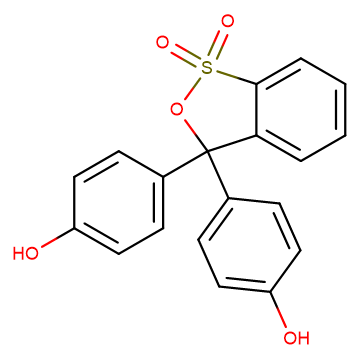
Phenol Red
CAS No. 143-74-8
Phenol Red( —— )
Catalog No. M11858 CAS No. 143-74-8
Red dye, pH indicator, and diagnostic aid for determination of renal function. It is used also for studies of the gastrointestinal and other systems.
Purity : >98% (HPLC)
 COA
COA
 Datasheet
Datasheet
 HNMR
HNMR
 HPLC
HPLC
 MSDS
MSDS
 Handing Instructions
Handing Instructions
| Size | Price / USD | Stock | Quantity |
| 1G | 26 | In Stock |


|
Biological Information
-
Product NamePhenol Red
-
NoteResearch use only, not for human use.
-
Brief DescriptionRed dye, pH indicator, and diagnostic aid for determination of renal function. It is used also for studies of the gastrointestinal and other systems.
-
DescriptionRed dye, pH indicator, and diagnostic aid for determination of renal function. It is used also for studies of the gastrointestinal and other systems.
-
In VitroPhenol red (PR) is the standard pH indicator in various cell and tissue culture media, as it provides a quick check for the health of the culture. Phenol red has also been used in multiple protocols to detect cellular hydrogen peroxide as well as peroxidase activity from human peroxidase enzymes.
-
In Vivo——
-
Synonyms——
-
PathwayOthers
-
TargetOther Targets
-
RecptorOthers
-
Research Area——
-
Indication——
Chemical Information
-
CAS Number143-74-8
-
Formula Weight354.38
-
Molecular FormulaC19H14O5S
-
Purity>98% (HPLC)
-
SolubilityDMSO: 10 mM
-
SMILESOC1=CC=C(C=C1)C1(OS(=O)(=O)C2=CC=CC=C12)C1=CC=C(O)C=C1
-
Chemical Name——
Shipping & Storage Information
-
Storage(-20℃)
-
ShippingWith Ice Pack
-
Stability≥ 2 years
Reference
1.Tamura, Z. Yakugaku Zasshi (in Japanese), 1997, 117 (10–11): 764–770.
molnova catalog



related products
-
Cyclopentyl phenyl k...
Cyclopentyl phenyl ketone (Benzoylcyclopentane) is used for the prevention and treatment of traumatic stress.
-
Glycerophospholipids...
Glycerophospholipids, cephalins (Phosphatidylethanolamines (egg)) are a mixture of phosphatidylethanolamines isolated from eggs, with various fatty acyl groups at the sn-1 and sn-2 positions.
-
TMRE
TMRE is a mitochondria specific dye (λex: 550 nm, λem: 575 nm).



 Cart
Cart
 sales@molnova.com
sales@molnova.com


